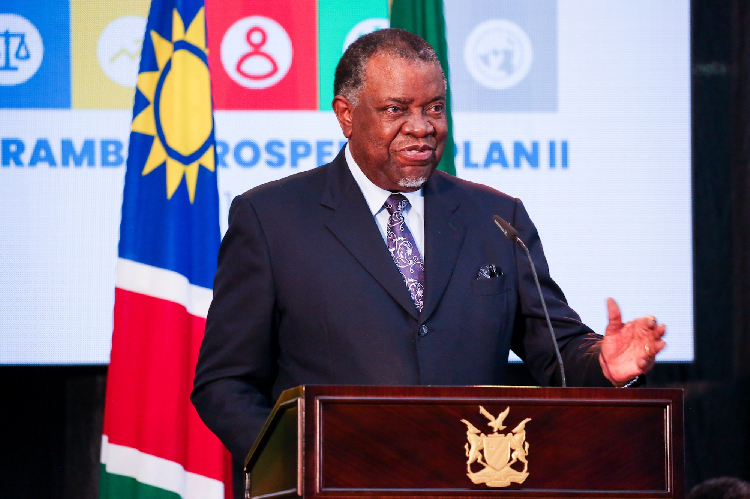The Ammonia Wrap: Haldor Topsøe and Aquamarine to deploy solid oxide electrolysis, green ammonia to carry hydrogen for South Korean steel, and Namibia’s national green ammonia strategy
By Julian Atchison on March 24, 2021
Welcome to the Ammonia Wrap: a summary of all the latest announcements, news items and publications about ammonia energy.
Green ammonia from Haldor Topsøe and Aquamarine
Hot on the heels of a major expansion in its electrolyser manufacturing capabilities, a new MoU signed this week will see Haldor Topsøe supply solid-oxide electrolyser cell (SOEC) units for the development of a new green ammonia production facility in partnership with Aquamarine. The first stage — to be completed by 2024 — will produce 300 tonne/day green ammonia using 100MW of electrolyser cells. The north German facility will have access to ample offshore wind power, and is well placed to feed into future demand for maritime ammonia fuel in the region.

The facility would also represent a huge step forward in energy efficiency improvements for ammonia production. Topsøe’s SOEC technology (already reported on extensively at Ammonia Energy) aims to produce ammonia with an energy efficiency of 7.2 MWh/tonne when integrated with Haber Bosch units, compared to 7.8 MWh/tonne for best available technology today (steam methane reforming & Haber Bosch).
“Transhydrogen Alliance”
Trammo and Proton Venture’s recent MoU was already an intriguing prospect, and now a brand new consortium has been officially formed: the “Transhydrogen Alliance“. Proton Ventures, Trammo DMCC (a Trammo Inc. subsidiary) and Varo Energy are aiming to import up to 2.5 million tonnes of green ammonia per year into the Port of Rotterdam, with the initial stage of the project to be completed by 2024.
Origin Energy signs deal with Korean steel maker POSCO

Origin Energy will supply green hydrogen for steel making in South Korea, to be exported from Australia as green ammonia. The new MoU will see feasibility studies conducted into the production and export of green ammonia from its under-development facility in Bell Bay, Tasmania. South Korean steel maker POSCO is aiming for carbon neutrality, and though it aims to be producing 5 million tonnes of green hydrogen per year locally by 2050, import of zero-carbon feed stock will be required in the interim as it ramps up its green hydrogen production capabilities.
Japanese electric utilities move towards ammonia
Kansai Electric Power and Chugoku Electric both announced new decarbonisation ambitions this week. Kansai’s “Zero Carbon Vision 2050” aims to eliminate carbon emissions from its operations (including power generation) altogether by 2050, partly through the use of zero carbon fuels like ammonia. Meanwhile, Chugoku will embrace the challenge of becoming carbon neutral by 2050, partly through the co-firing of ammonia at its Mizushima coal power station.
New funding for CF Industries low-carbon fertiliser in the UK

We already reported on the net-zero Teeside project in a recent wrap article, and now CF Industries has received a £510,000 funding boost for a CCS project at its other UK fertiliser plant near Liverpool. The new government funding is related to HyNet North West, an initiative that will explore CCS options for manufacturing processes and hydrogen production in England’s north west.
Consortium to study Indonesian blue ammonia output
Mitsubishi Corp. will lead a consortium including Japan Oil, Gas and Metals National Corporation (JOGMEC), Bandung Institute of Technology (ITB), and PT Panca Amara Utama (PAU) that seeks to develop a blue ammonia project in Central Sulawesi. PAU’s existing 660,000 tonne/year ammonia production facility near Luwuk uses locally-produced natural gas feed stock, and the consortium will investigate the feasibility of retrofitting the plant with CCS capabilities.
Namibia’s national hydrogen & ammonia strategy
And, in a bid to become the first carbon neutral African nation, Namibia will develop and implement a national green hydrogen and green ammonia strategy. In his announcement, President Hage Geingob was bullish about Namibia’s prospects:
“Given our world class renewable energy resources, Namibia will develop a national strategy for developing green hydrogen and ammonia. As we pursue this strategy, we have the opportunity to become the first country in Africa to achieve carbon neutrality and utilise the African Continental Free Trade Area (AfCFTA) to export clean energy to our neighbours”
“Govt goes for broke… Harambee II provides fertile ground for investment” by Albertina Nakale, New Era, 19 March 2021

Sign up for weekly AEA updates
Make sure you’re signed up for AEA email updates, including our weekly newsletter featuring wrap articles just like this one.
